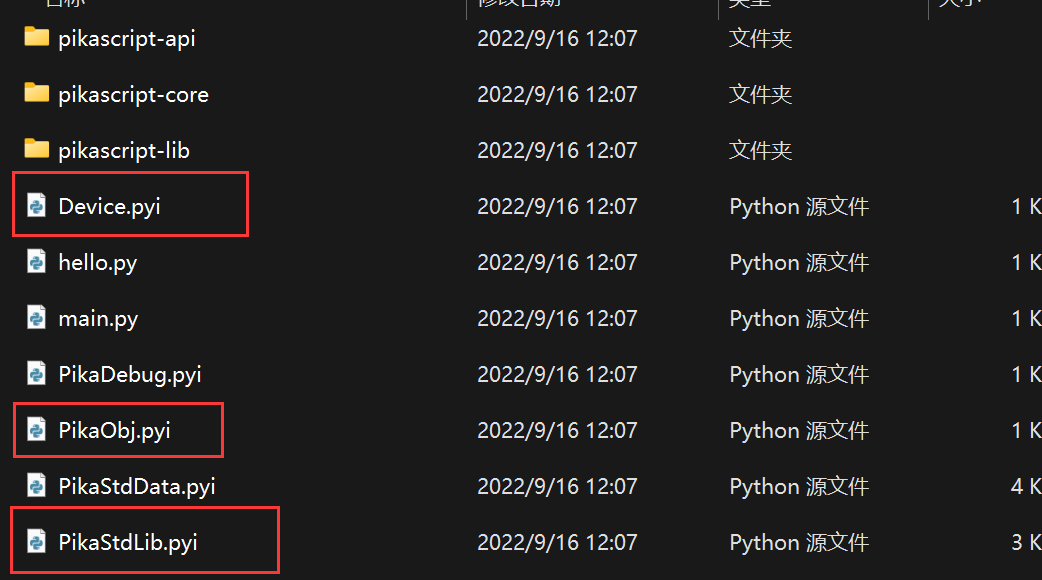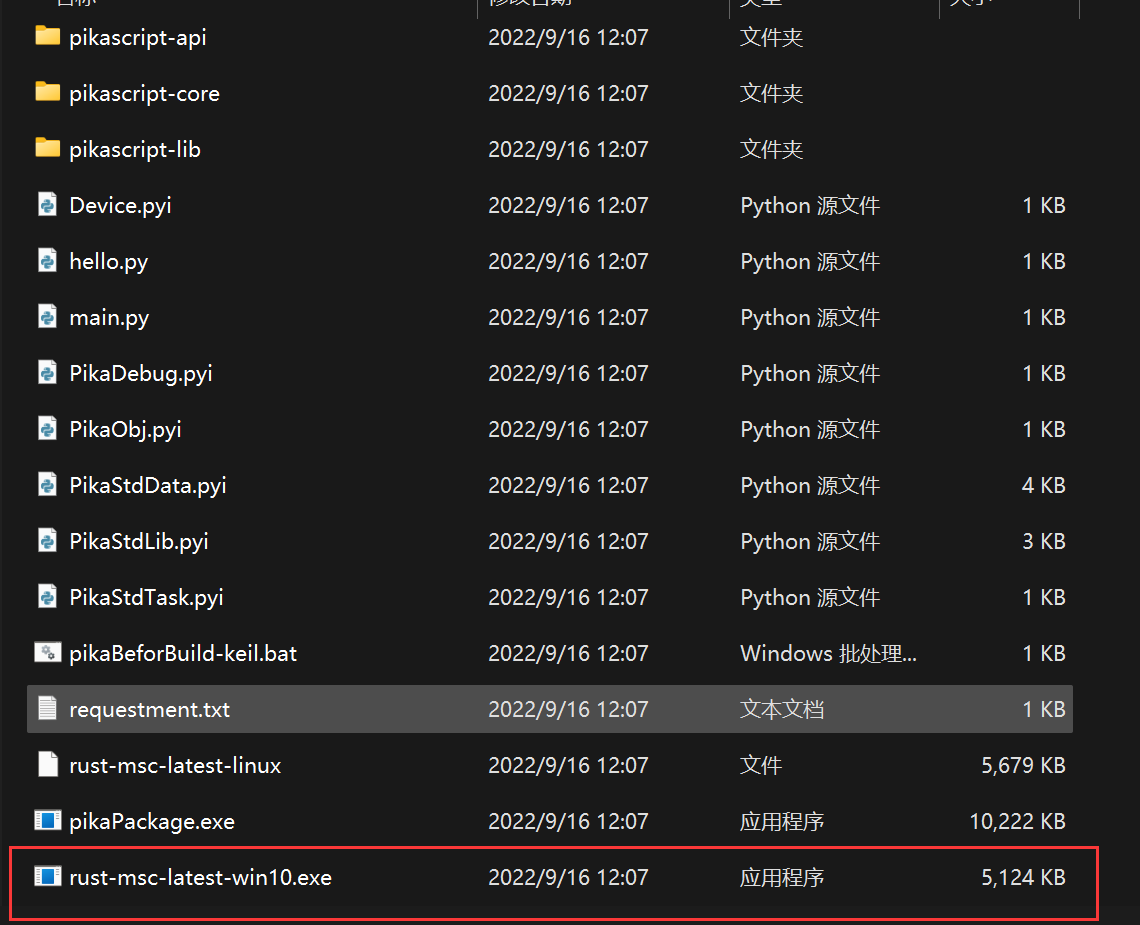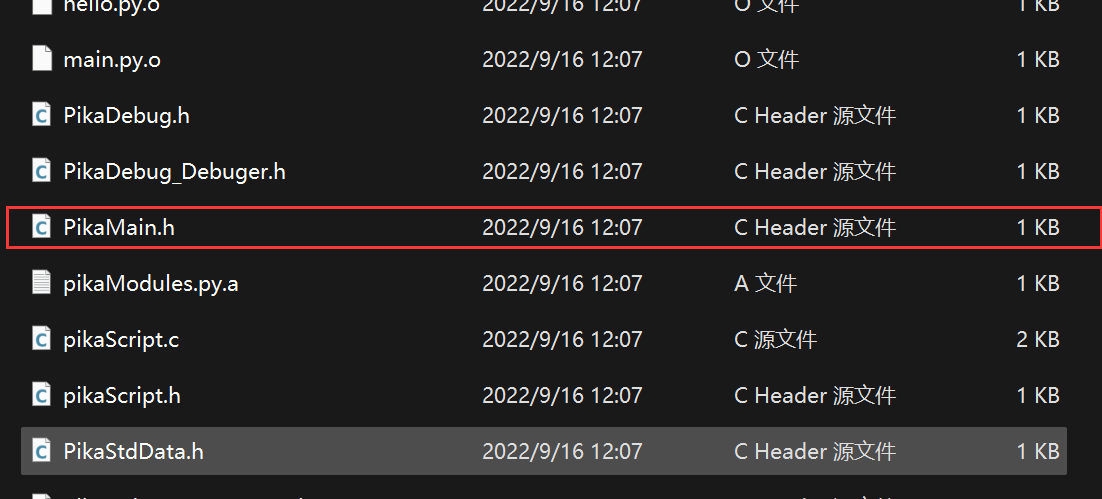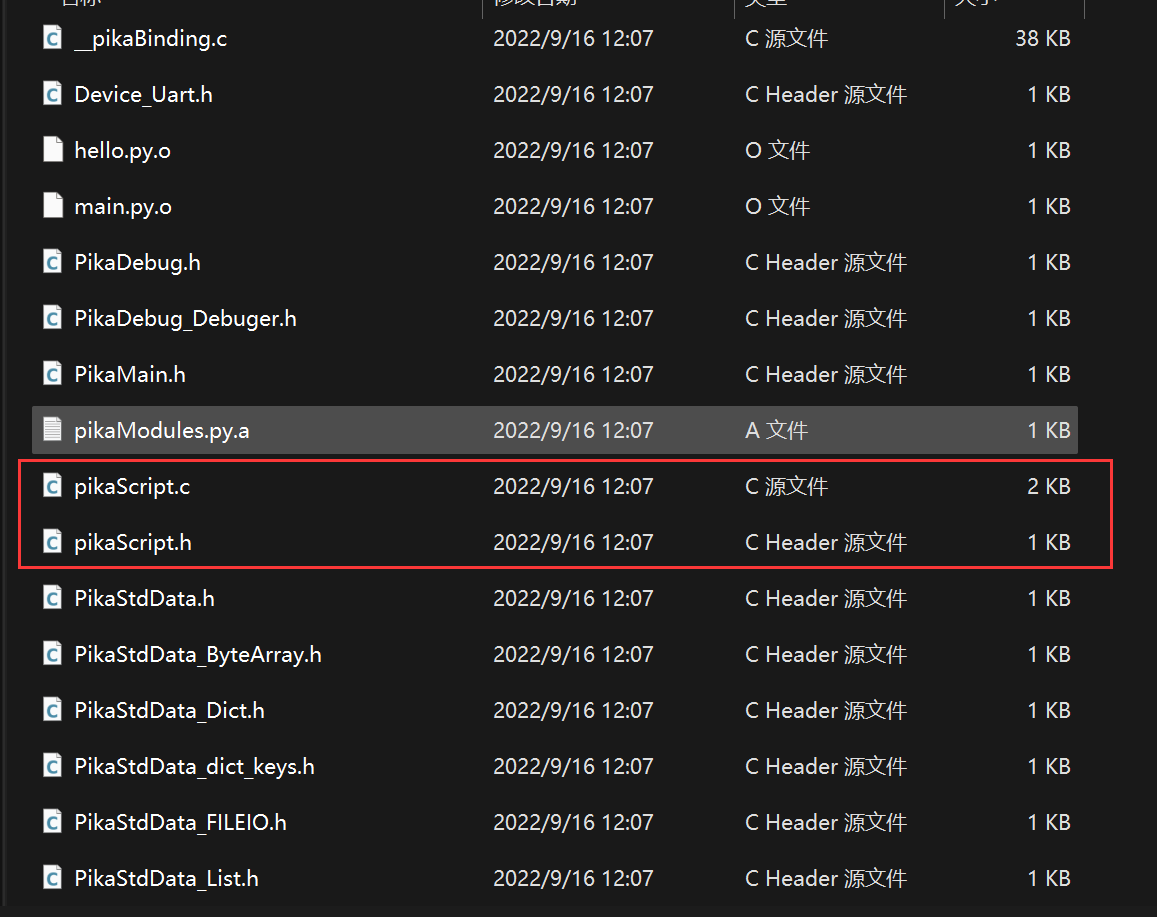7.1. PikaPython C module overview
We still use keil’s simulation project as an example, if you don’t get the simulation project yet, please refer to 1. Three minutes to get started quickly
7.1.1. PikaPython module and module interface
We open the pikascript folder and find that in addition to main.py, there are Device.pyi, PikaObj.pyi and PikaStdLib.pyi in the root of the folder, which correspond to three PikaPython C modules (class package), each .pyi file itself is called the module interface (package interface). A C module can contain several classes that are more related.

Each PikaPython C module consists of two parts: module interface and module implementation (package implement). Let’s start by opening Device.pyi to see the contents, we will call Device.pyi the Device module interface in the subsequent documentation. Here is the entire contents of Device.pyi.
# Device.pyi
class LED:
def on(self):
pass
def off(self):
pass
class Uart:
def send(self, data:str):
pass
def setName(self, name:str):
pass
def printName(self):
pass
As you can see, there are two classes defined in Device.pyi using pyhon standard syntax, the LED class and the Uart class.
The LED class defines two methods, the on() method and the off() method, while the Uart class defines the send(data:str) method, the setName(name:str) method, and the printName() method.
As you can see, all these methods have the feature that instead of being definitions of methods, they are declarations (annotations) of methods, because all method implementations are passed out and none of them are written for implementation. And the method’s entry parameters are all with type declarations. For example, data:str means a data parameter with the type str, i.e. a string type.
This is because the module implementation of this module is written in C, i.e. the C modules of PikaPython are written with declarations in python syntax and implementations in C. PikaPython’s module development is a hybrid programming technique for interface-oriented programming.
However, when using an existing module, it is not necessary to know the module implementation, but only the module interface, in order to use the module.
7.1.2. Importing and calling modules
Let’s see how to use this module.
Let’s open main.py in the project, see the name, this file is the entry file for PikaPython.
The content of main.py is as follows
# main.py
import Device
import PikaStdLib
led = Device.LED()
uart = Device.Uart()
mem = PikaStdLib.MemChecker()
print('hello wrold')
uart.setName('com1')
uart.send('My name is:')
uart.printName()
print('mem used max:')
mem.max()
print('mem used now:')
mem.now()
Importing an already written C module is very simple, for example, to import the Device module, you just need to import Device, and note that all .py and .pyi files should be placed in the root directory of the pikascript fileshelf.
The call method uses the form uart.setName('com'), which is standard Python syntax and does not need much introduction.
After writing the module calls in main.py, double-click on rust-msc-v0.5.0.exe to pre-compile the PikaPython project, the pre-compiled output file is in the pikascrip-api folder.

The pika pre-compiler generates .h declaration files for the imported modules. The filenames start with the module name and each class corresponds to one .h file.

And PikaMain.h correspond to a special class that is the main PikaPython class, compiled from main.py.

pikaScript.c and pikaScript.h, on the other hand, are initialization functions compiled from main.py. When the initialization functions are run, the startup script is automatically executed.

In the current main.py, the startup script is written in the outermost method call, which is:
led = Device.LED()
uart = Device.Uart()
mem = PikaStdLib.MemChecker()
print('hello wrold')
uart.setName('com1')
uart.send('My name is:')
uart.printName()
print('mem used max:')
mem.max()
print('mem used now:')
mem.now()
The compiled pikaScriptInit() initialization function corresponds to:
PikaObj * pikaScriptInit(){
PikaObj * pikaMain = newRootObj("pikaMain", New_PikaMain);
obj_run(pikaMain,
"\n"
"led = Device.LED()\n"
"uart = Device.Uart()\n"
"mem = PikaStdLib.MemChecker()\n"
"\n"
"print('hello wrold')\n"
"uart.setName('com1')\n"
"uart.send('My name is:')\n"
"uart.printName()\n"
"print('mem used max:')\n"
"mem.max()\n"
"print('mem used now:')\n"
"mem.now()\n"
"\n"
"\n");
return pikaMain;
}